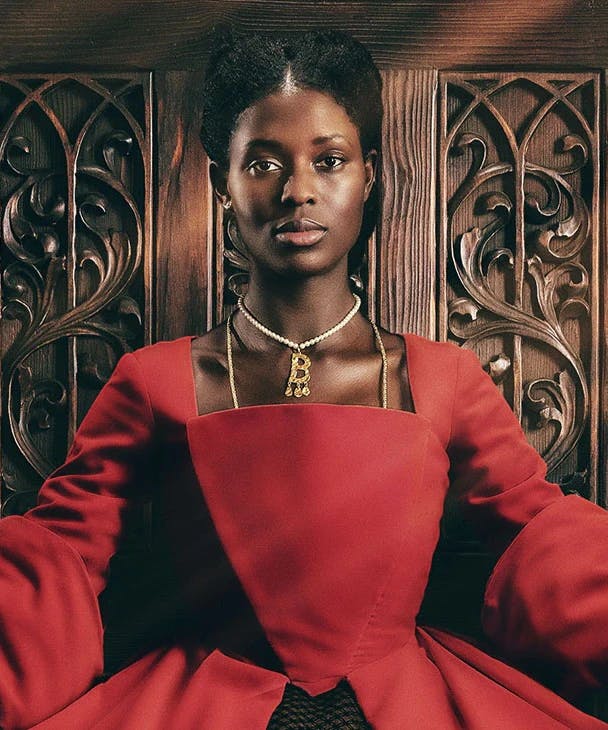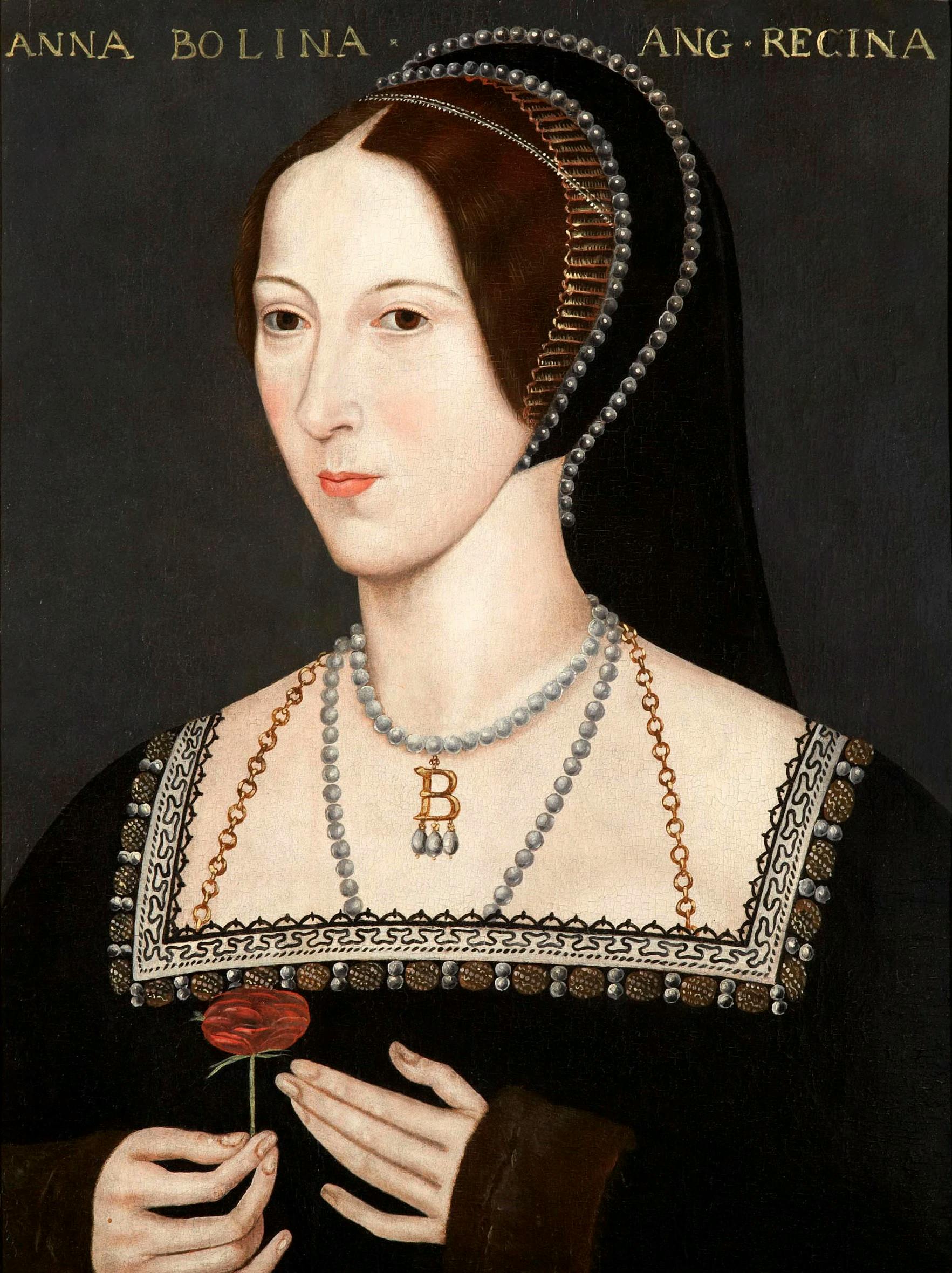If The Casting In "Lilo & Stitch" Matters So Much, Why Isn't Anyone Upset About The Actress Who Played Anne Boleyn?
Fans claim that the "Lilo & Stitch" live-action remake doesn't feature actors who are dark-skinned enough. But they didn't have a problem with the total rewrite of historical figure Anne Boleyn.

Disney's decision to give the 2002 animated classic Lilo & Stitch a live-action remake has sparked controversy, as many fans of the original movie have accused the studio of colorism in the casting of a biracial, light-skinned actor for the role of Nani, Lilo's older sister. The character in the original film was depicted with darker skin, black hair, and strong ethnic features. Some fans have expressed disappointment with the casting, highlighting that the portrayal of Nani as an Indigenous Hawaiian with dark skin and distinct features was significant within their communities. They argue that the casting choice reflects a larger issue of colorism in Hollywood.
Disney has yet to comment on the accusations. In the upcoming 2024 adaptation, 22-year-old Sydney Elizabeth Agudong, who is multiracial with Hawaiian ancestry and is a true island girl, will portray Nani. But apparently, she is too light-skinned to portray Nani. Newcomer Maia Kealoha has been cast as 6-year-old Lilo, and Zach Galifianakis will also join the cast in an unspecified role. While some have celebrated the casting news, numerous Native Hawaiian fans have expressed disappointment, stating that they had hoped for an actor with features more representative of the island's Indigenous population. One fan tweeted, "I wanted Nani to look like me." Another fan tweeted, "Nani was a dark Hawaiian woman, what is this."
This is not the first time Disney has faced accusations of colorism. The casting of Princess Jasmine in the 2019 live-action remake of Aladdin stirred similar controversy. Jasmine, the sultan's daughter in the fictional setting of Agrabah, was played by Naomi Scott, a biracial British actor of Indian ancestry. Critics accused Disney of whitewashing the character, who was the only Disney princess with darker skin at the time of the animated movie's release in 1992.
In 2018, Disney also faced backlash for altering the appearance of Tiana, the studio's first black princess from The Princess and the Frog. In an unreleased version of Ralph Breaks the Internet, Tiana was depicted with lighter skin and looser curls. After receiving criticism from fans and feedback from the voice actor who played Tiana, Disney reanimated the scene, reverting the character's appearance to be more consistent with her depiction in The Princess and the Frog.
This is not the first time Disney has faced accusations of colorism.
Disney has been accused of perpetuating so-called Eurocentric beauty standards by refusing to give darker-skinned Pacific Islanders the visibility and representation they deserve. With all the policing going on with characters in TV shows and movies, you have to wonder why none of these people batted an eye when Anne Boleyn, a real historical figure, was transformed into a totally different race for a series on Channel 5 called Anne Boleyn.
If the Casting in "Lilo & Stitch" Matters So Much, Why Isn't Anyone Upset About the Actress Who Played Anne Boleyn?
Anne Boleyn, the second wife of King Henry VIII, has become an enduring figure in history due to her tumultuous relationship with the English monarch, her untimely death, and her role in the religious and political upheaval that characterized the Tudor period. Her life story, marked by scandal and ambition, continues to captivate audiences, and her portrayal in various forms of media has ensured her legacy lives on.
Born in England around 1501, Anne Boleyn was the daughter of Sir Thomas Boleyn and his wife, Lady Elizabeth Howard. Her early years were spent at the court of Margaret of Austria, and later, she served as a lady-in-waiting to Queen Claude of France. These experiences allowed her to develop a sophisticated understanding of politics and courtly etiquette. Upon her return to England in 1522, Anne joined the court of King Henry VIII as a lady-in-waiting to Queen Catherine of Aragon. It was here that she caught the eye of the King, who was already seeking an annulment from his marriage to Catherine due to her inability to produce a male heir. Despite initially resisting Henry's advances, Anne eventually succumbed to his persistent courtship, and their relationship transformed into a passionate affair.
The romance between Anne and Henry VIII ultimately led to a profound religious and political shift in England. Desperate to marry Anne and secure a male heir, Henry broke away from the Roman Catholic Church and established the Church of England. This dramatic move, known as the English Reformation, had far-reaching consequences that extended beyond Anne's lifetime. Anne Boleyn married Henry in a secret ceremony in 1533, and she was crowned Queen of England later that year. Despite her ambitious rise to power, Anne's reign as queen was marked by tragedy. She suffered several miscarriages, and her only surviving child, the future Queen Elizabeth I, was not the male heir Henry so desperately desired.
As Anne's influence waned and her inability to produce a male heir became apparent, her enemies at court seized the opportunity to bring her down. In 1536, she was arrested on charges of adultery, incest, and treason. Historians continue to debate the veracity of these accusations, but most agree that they were likely fabricated to justify her removal from power. Anne Boleyn was executed by beheading on May 19, 1536, and her death marked a tragic end to a life that had once held such promise.
The story of Anne Boleyn has captivated audiences for centuries, and her portrayal in media and entertainment today remains a testament to her enduring legacy. Notable depictions of Anne include the 1969 film Anne of the Thousand Days, the 2008 Showtime series The Tudors, and the 2015 BBC miniseries Wolf Hall. In 2020, a British television series titled The Spanish Princess explored the lives of Catherine of Aragon and Anne Boleyn.
Most recently, a British miniseries was released on Channel 5 called Anne Boleyn. It had three episodes and claimed to tell the tale of Anne Boleyn—but from Anne's perspective. "You may know the history, but you don't know her story," reads the caption on the Instagram reel that promoted the show in May 2021.
There was one thing that stood out above all else, though: Anne Boleyn was black, played by British actress Jodie Turner-Smith. But the real Anne was most certainly not black. In fact, she is portrayed in portraits as fair-skinned, as most people were in that era, in her family, and in her region.

On Channel 5's Instagram page that posted the preview of this miniseries, many people commented about this narrative adjustment.
"One could as well portrait Harriet Tubman as a white woman. It is ridiculous and does not have any sense," a user commented.
"I want a white MLK after watching this," another person said.
"Nothing to see here. This isn't blatant racism. This isn't an attempt at skewing perceptions on White Culture. Just as ridiculous as if Shaka Zulu was played by Jonah Hill," another user wrote.
Some people tried to defend this choice of actress, saying that historical accounts called Anne "swarthy." Even if she were swarthy, that most certainly doesn't mean she was a completely different race. Miranda Kaufman, author of Black Tudors: The Untold Story, criticized the people who pointed out this historical inconsistency: “We have these iconic figures from history and literature, who people feel possessive about in some way. But you have to remember that it’s not a historical reconstruction: it’s a thriller; it’s a drama; it’s entertainment. As a historian, I think one of our roles is figuring out how to engage people with the past—and this is a fresh take on an old story.”
It's perfectly acceptable to erase or completely rewrite history that features white individuals such as Anne Boleyn.
It's not possessive to desire historical consistency with real people who once walked the earth. And if we're talking about movies or TV shows that are just entertainment and drama, why does it matter that fictional cartoon characters aren't portrayed by human beings who have exactly the same skin color? They're just made-up characters for the big screen, right? What's the big deal?
There is no explanation for these logical inconsistencies, but that's the very core of intersectional politics. Things don't need to make sense—they just need to fit into the reductive worldview of oppressor vs oppressed, which rules all progressive, woke ideologies. We're taught that there's never anything bad that can be done to or said about white people because they have been the only oppressors for all of human history, so it's perfectly acceptable to erase or completely rewrite history that features white individuals such as Anne Boleyn. After all, whiteness deserves no respect.
Meanwhile, black people and other minorities have always been the oppressed in the eyes of the woke. They can never be racist or oppressive because they have never been the oppressors (this is entirely untrue, but the objective truth never matters to progressive ideologies). And so there is no problem whatsoever when Anne Boleyn is replaced by a black actress. It does mean, though, that there are serious issues when minority characters—even fictional ones—are replaced with actors who are even slightly lighter-skinned. This is a gross offense to the woke crowd, and even unforgivable. The illogical fury they experience over seeing the cast of Lilo & Stitch can never be quelled with conversation or facts. This rage is the very thing that gives the woke mob fuel and purpose, even though it makes absolutely no sense whatsoever.
Love Evie? Sign up for our newsletter and get curated content weekly!